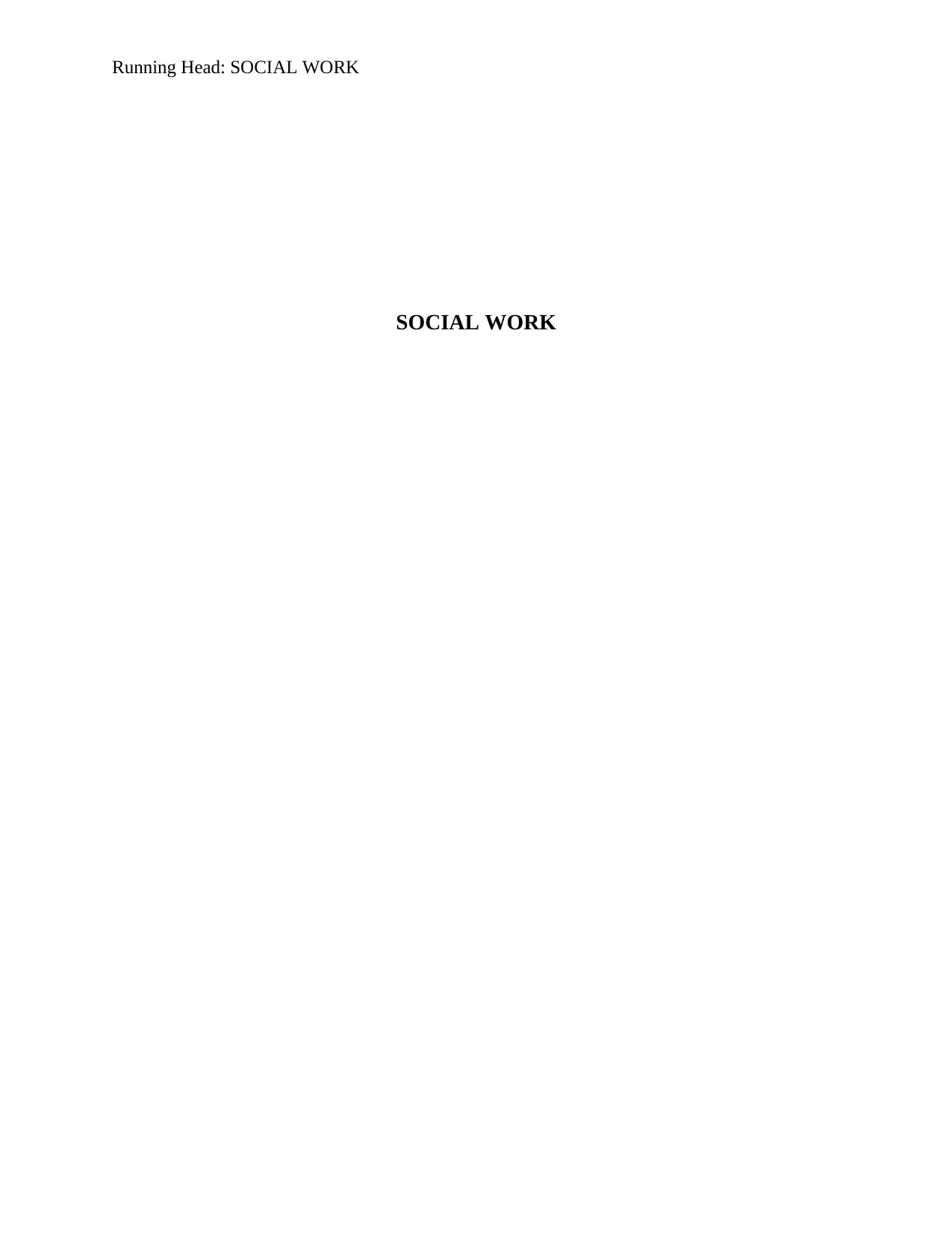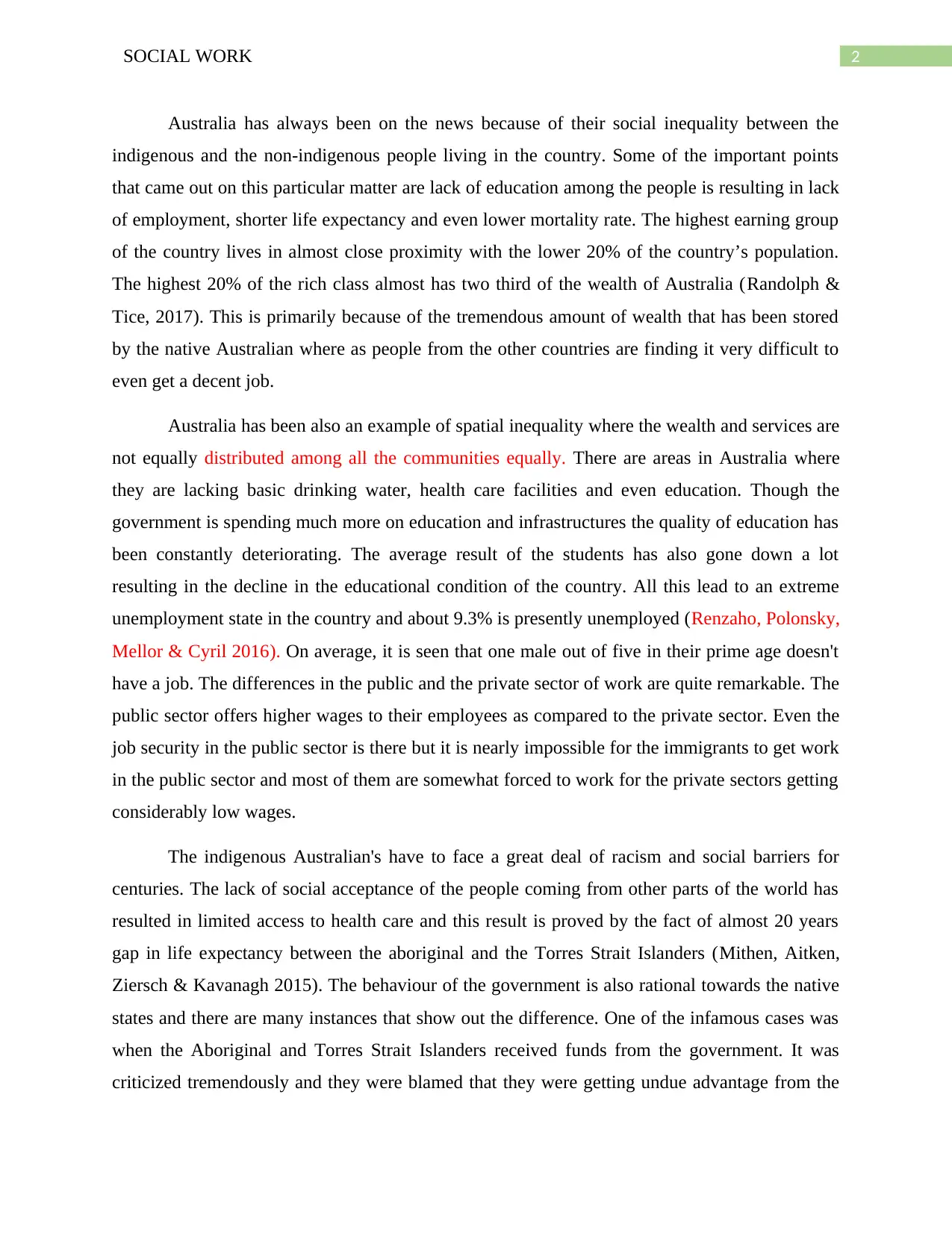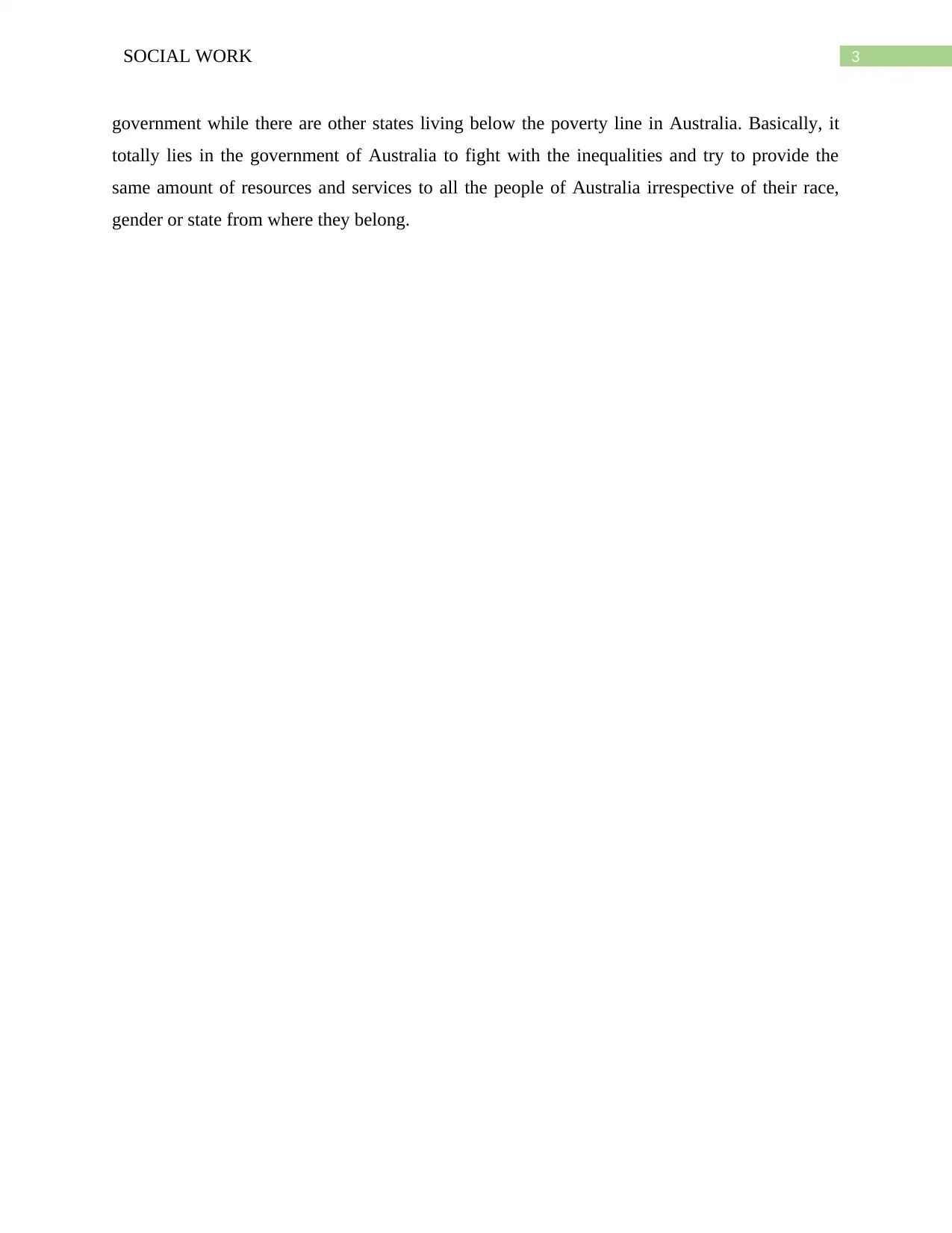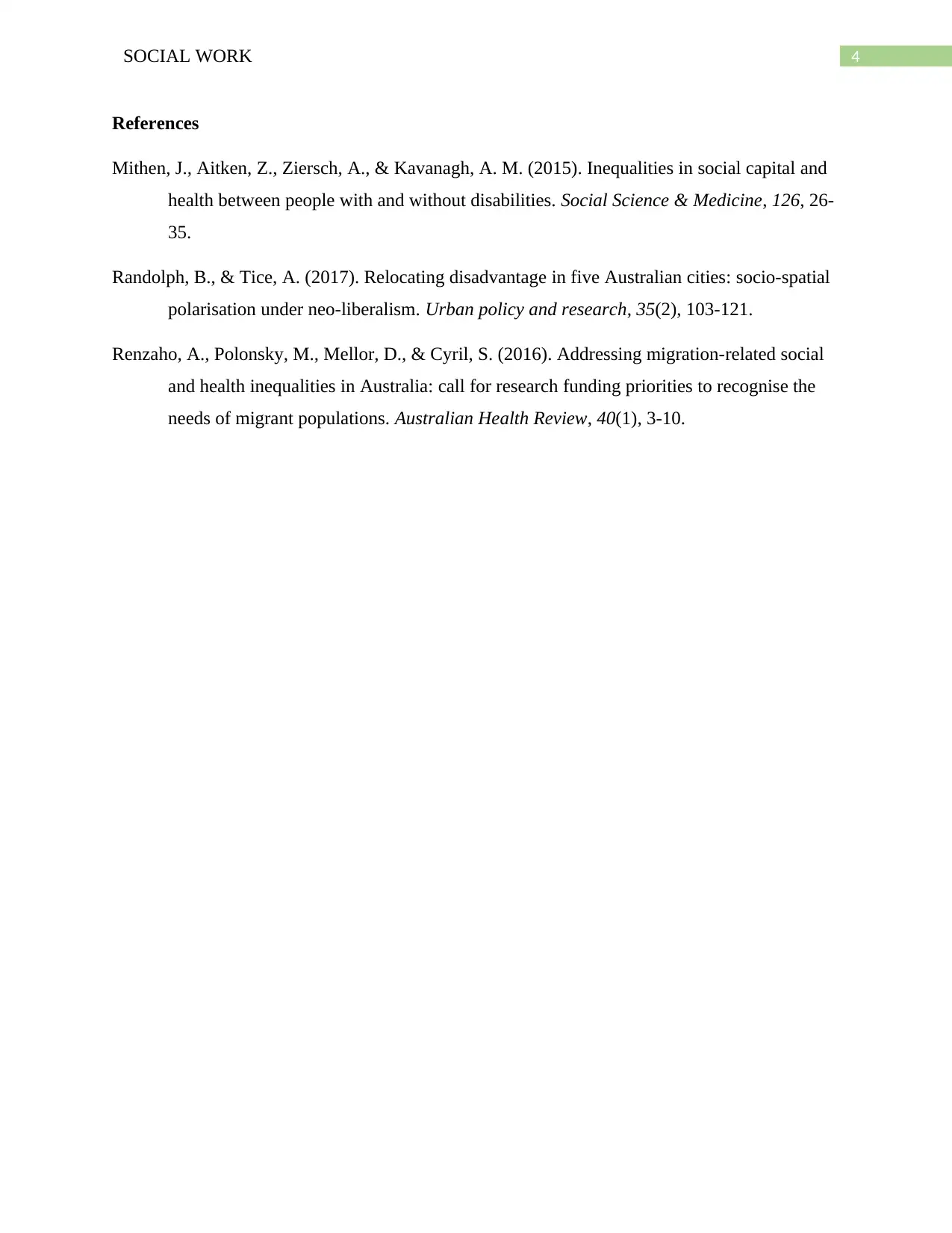Examining Social Inequality and Disparities in Australia
VerifiedAdded on 2023/01/18
|4
|700
|88
Essay
AI Summary
This essay examines social inequality in Australia, focusing on the disparities between indigenous and non-indigenous populations. It highlights issues such as lack of education leading to employment gaps, shorter life expectancies, and lower mortality rates among indigenous Australians. The essay discusses the concentration of wealth, spatial inequality in access to resources like drinking water, healthcare, and education, and the decline in educational quality. Unemployment rates and differences in public versus private sector wages are also explored. Furthermore, the essay addresses racism, social barriers faced by indigenous Australians, and the government's approach to these inequalities. The conclusion emphasizes the government's role in providing equal resources and services to all Australians, regardless of their background. The essay references key academic sources to support its arguments.
1 out of 4










![[object Object]](/_next/static/media/star-bottom.7253800d.svg)